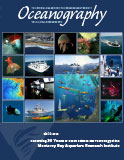First Paragraph
In the spring of 1987, David Packard, co-founder of the Hewlett Packard Company, formalized creation of the Monterey Bay Aquarium Research Institute (MBARI). In doing so, he sought to foster a partnership among scientists and engineers who would dedicate their time to designing, building, and using novel instruments and systems to tackle pressing research issues within the ocean sciences. Packard’s interest in ocean technology was sparked during his government service as the US Assistant Secretary of Defense from 1969 to 1971. Encouraged by two of his daughters, Nancy Burnett and Julie Packard, he created the Monterey Bay Aquarium Foundation in 1978. With personal backing from David and Lucile Packard, the Monterey Bay Aquarium opened its doors in 1984 with Julie Packard as its director. That development transformed a faded, seaside sardine-processing factory located in the storied Cannery Row of Steinbeck fame, into a world-renowned destination. The richness of Monterey’s history, maritime heritage, and the wonders of the adjacent bay made for an ideal combination that not only met Packard’s expectations, but also led to MBARI, a private, nonprofit oceanographic research institution that would complement the public-serving Monterey Bay Aquarium. With its iconic submarine canyon and location along the central California coast, Monterey Bay would serve as a natural laboratory for implementing his vision for MBARI.

